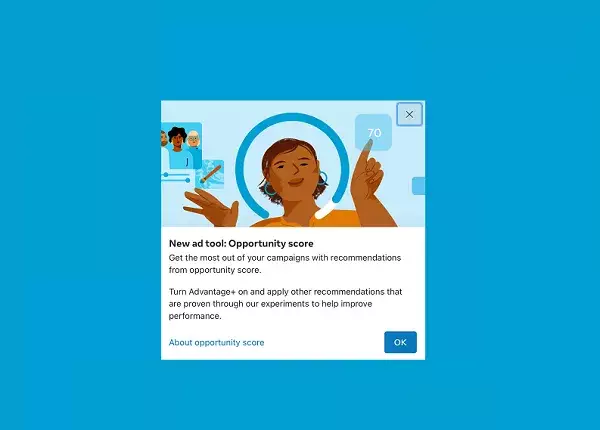Meta has recently introduced an intriguing tool titled the Opportunity Score, which is designed to revolutionize how advertisers analyze and optimize their ad campaigns. After taking the time to refine this score through various trials and improvements, Meta is now proactively disseminating this metric to a broader audience of advertisers. By integrating it into the Ads Manager, Meta aims to cultivate an environment where advertisers can track opportunities more effectively, leveraging artificial intelligence to enhance their advertising performance.
The Mechanics of Opportunity Score
At its core, the Opportunity Score provides a clear, quantitative reflection of how well an advertising campaign is positioned to succeed. Represented as a score between 0 to 100, the Opportunity Score evaluates the effectiveness of an ad campaign’s setup and offers real-time suggestions for improvement. This rating system focuses on the implementation of Meta’s recommendations, which are crafted from the wealth of data gleaned from various advertisers’ performance. By prioritizing high-impact changes, Meta aims to streamline the optimization process, allowing advertisers to make necessary adjustments quickly.
Real-Time Recommendations: A Game Changer
One of the highlights of the Opportunity Score is its integration with real-time recommendations. These suggestions are not desert-like in their abstraction; rather, they are grounded in empirical data and are tailored to each advertiser’s unique context. When advertisers receive alerts from the Opportunity Score, they can quickly enact changes that are predicted to enhance their campaign’s effectiveness. For instance, if a campaign is flagged for missing crucial information, addressing that issue could be a straightforward yet effective pathway to elevate the score. Moreover, users who have adopted these recommendations report considerable decreases in their cost per result, underscoring the practical value of engaging with the Opportunity Score.
Evaluating the Efficacy of Recommendations
However, it’s essential to approach Meta’s Opportunity Score with a discerning eye. While the score is inherently data-driven, the recommendations offered are not foolproof solutions. There exists a level of uncertainty because the score is founded on generalized observations—ad results can vary widely across different industries and target demographics. Thus, while some advertisers may find success in adhering to Meta’s guidelines, others may not experience similar benefits. This leads to a crucial point: the Opportunity Score should be seen as a tool for consideration, rather than a directive that must be followed without question.
Implications for Advertisers
For advertisers who are eager to harness the power of AI-driven insights, the Opportunity Score presents an exciting opportunity to refine their strategies. As the digital advertising landscape becomes increasingly competitive, having access to such analytical resources can provide a significant edge. It encourages advertisers to be proactive in their approach and take ownership of their campaigns, all while maintaining a level of skepticism that is healthy in any business environment. It will be interesting to observe how the wider adoption of this tool will affect advertising strategies and outcomes, particularly as Meta continues to expand its availability to more users. The Opportunity Score heralds a new era of advertising intelligence that could reshape the way campaigns are conceived, executed, and optimized.


Leave a Reply